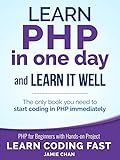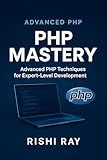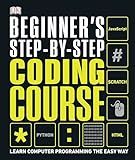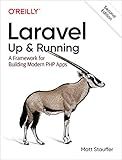Best PHP Coding Tools to Buy in December 2025

PHP: Learn PHP in One Day and Learn It Well. PHP for Beginners with Hands-on Project. (Learn Coding Fast with Hands-On Project Book 6)



Expert PHP 5 Tools



PHP Mastery: Build Secure, Scalable, and Modern Web Applications Like a Pro: Master Advanced PHP 8 Techniques with OOP, APIs, MVC, Security, and Real-World ... From Beginner to Full-Stack Mastery Book 6)



Beginner's Step-by-Step Coding Course: Learn Computer Programming the Easy Way (DK Complete Courses)



Laravel: Up & Running: A Framework for Building Modern PHP Apps



Head First PHP & MySQL: A Brain-Friendly Guide


To convert an array to an object in PHP, you can use the type casting method. Here's the code snippet that demonstrates the conversion:
$array = array('key1' => 'value1', 'key2' => 'value2', 'key3' => 'value3'); $obj = (object) $array;
In the above code, you create an array containing key-value pairs. Then, you cast the array to an object using the (object) type casting syntax. As a result, the array is converted into an object, and you can access its elements like object properties.
For example, you can access the values using the object notation:
echo $obj->key1; // Output: value1 echo $obj->key2; // Output: value2 echo $obj->key3; // Output: value3
By converting an array to an object, you can leverage object-oriented programming principles and utilize objects' features and methods.
How to convert an array of objects to a single object in PHP?
To convert an array of objects into a single object in PHP, you can use the following steps:
- Start with an array of objects.
- Create an empty object to store the converted result.
- Loop through each object in the array.
- Inside the loop, use the get_object_vars() function to get an array representation of the current object's properties.
- Merge the array representation of the object's properties into the result object using the array_merge() function.
- Finally, the converted object will contain all the properties from the array of objects.
Here's an example implementation:
function convertArrayToObject($array) { $result = new stdClass(); // create an empty object
foreach ($array as $object) {
$properties = get\_object\_vars($object); // get properties of the current object
$result = (object) array\_merge((array) $result, $properties); // merge the properties into the result object
}
return $result;
}
// Example usage:
$objects = [ (object) ['foo' => 'Hello'], (object) ['bar' => 'World'], (object) ['baz' => 'PHP'] ];
$convertedObject = convertArrayToObject($objects);
var_dump($convertedObject);
The var_dump() function is used to display the converted object, which will output:
object(stdClass)#4 (3) { ["foo"]=> string(5) "Hello" ["bar"]=> string(5) "World" ["baz"]=> string(3) "PHP" }
What is the default behavior when converting an array to an object in PHP?
When converting an array to an object in PHP using the (object) or the stdClass keyword, the default behavior is to create an object of the stdClass class.
The resulting object will have the array's keys as properties and their corresponding values as property values.
For example, consider the following array:
$array = array('name' => 'John', 'age' => 30);
Converting it to an object:
$object = (object) $array;
The resulting object will have properties with the same names as the array keys:
var_dump($object);
Output:
object(stdClass)#1 (2) { ["name"]=> string(4) "John" ["age"]=> int(30) }
What are some use cases where converting an array to an object in PHP is beneficial?
Converting an array to an object in PHP can be beneficial in various use cases, including:
- Data manipulation: When dealing with complex data structures or datasets, converting an array to an object can provide a more convenient way to access and manipulate the data. Object-oriented programming techniques can be utilized to define methods and properties for easier data processing.
- API responses: When building APIs, it is common to send responses in JSON format. Converting an array response to an object allows for better control over the response structure, making it easier to manage and modify the response properties.
- Configurations and settings: Array-to-object conversion can be useful in handling configuration files or settings arrays. By converting the array to an object, you can access the settings using object properties, making the code more readable and maintanable.
- Template rendering: In PHP's template engines, transforming an array into an object can be advantageous when passing data to the views. It provides a more intuitive access to the data and allows for more flexibility in managing and manipulating the data within the template.
- Database interactions: When working with databases, fetching results as arrays is a common practice. However, converting the database results into objects can provide a cleaner and more object-oriented way to work with the data. This approach can improve code organization and readability.
Overall, converting an array to an object can bring the benefits of object-oriented programming, such as encapsulation, abstraction, and better code structure, to scenarios where arrays alone may be limited.
What is the recommended approach for converting large arrays to objects in PHP?
When converting large arrays to objects in PHP, the recommended approach is to use the built-in ArrayObject class. The ArrayObject class provides a way to wrap arrays in an object-oriented way, giving you the ability to access array elements as object properties.
The steps to convert a large array to an object using ArrayObject are as follows:
- Create an instance of the ArrayObject class and pass the array as an argument:
$array = [...]; // the large array $object = new ArrayObject($array);
- Access the array elements as object properties:
$value = $object->propertyName;
- Modify array elements using the object syntax:
$object->propertyName = $newValue;
By using ArrayObject, you can work with large arrays as objects, which can provide a more intuitive syntax and additional functionality, such as the ability to implement Countable, Serializable, and IteratorAggregate interfaces.
// Implementing interfaces class MyArrayObject extends ArrayObject implements Countable, Serializable, IteratorAggregate { ... }
Note that converting large arrays to objects can have implications on memory usage, performance, and maintainability. It's important to consider the trade-offs and evaluate if working with arrays directly might be more suitable for your specific use case.
What is the default visibility of properties when converting an array to an object in PHP?
By default, when converting an array to an object in PHP, the visibility of the properties is set to public. This means that all properties of the array will be accessible and can be accessed from outside the object.
What are the potential pitfalls of converting an array to an object in PHP?
Converting an array to an object in PHP can have potential pitfalls, including:
- Loss of array-specific functionality: Arrays in PHP have many built-in functions and features that are not applicable to objects. By converting an array to an object, you may lose these functionalities, making it harder to manipulate data.
- Inconsistencies in data structure: Arrays and objects have different data structures. Arrays are indexed by integers or strings, while objects have properties. Converting an array to an object may result in inconsistencies in the data structure, leading to unexpected behavior.
- Performance impact: Objects consume more memory than arrays due to additional overhead, such as maintaining the inheritance tree and storing object-specific information. Converting an array to an object may result in increased memory usage and potential performance degradation, especially for large data sets.
- Compatibility issues: Depending on how the array data is structured, converting it to an object may lead to compatibility issues with existing code. If the code relies on array-specific functionality, such as accessing elements using numeric or string keys, converting it to an object may break the functionality.
- Debugging difficulties: Objects in PHP can be more complex to debug compared to arrays. Objects can have nested properties and methods, which can make it harder to track down issues and understand the structure of the data.
It's important to carefully consider the implications and potential issues before converting an array to an object in PHP.
How to convert an object with methods to an array in PHP?
To convert an object with methods to an array in PHP, you can use the get_object_vars() function along with get_class_methods() function.
Here's an example of how to do it:
class Example { private $property1; private $property2;
public function \_\_construct($property1, $property2) {
$this->property1 = $property1;
$this->property2 = $property2;
}
public function method1() {
// Some logic here
}
public function method2() {
// Some logic here
}
}
$object = new Example('value1', 'value2');
// Get object properties as an array $propertiesArray = get_object_vars($object);
// Get object methods as an array $methodsArray = get_class_methods($object);
// Combine properties and methods arrays into a single array $array = array_merge($propertiesArray, $methodsArray);
print_r($array);
In this example, we have a class Example with two properties and two methods. We create an instance of the class, and then use get_object_vars() to extract the properties as an array, and get_class_methods() to extract the methods as an array. Finally, we merge both arrays into a single array. The result will be an array containing the properties as elements and the methods as keys.
